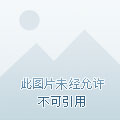
Hu Xuanwu Stone Carved Tomb Gate Tang (618-907) Ningxia Hui Autonomous Region Museum Collection Caption: In the middle of the stone gate, each shallow carving is a maiko, all standing on a small round felt on one foot, with one leg rising. Raise your arms and dance. Surrounded by cirrus cloud costumes, the dancers seem to leap above the clouds, which coincides with the performance of the HuXuan dance contained in the New Book of Tang and the Miscellaneous Records of Lefu.
Mosaic Figure Painting Circa 2500 BC Collection of the National Museum of Damascus, Syria Caption: The picture depicts a Sumerian king (first from left) and a Sumerian priest with long hair (second from right) co-presiding over the slaughter of rams, accompanied by a bearded Malian (far right), all clasping their hands in prayer.
The Two Rivers Civilization in the Tigris-Euphrates River Basin, the Indian Civilization in the Indus-Ganges River Basin, and the Chinese Civilization in the Yellow River-Yangtze River Basin were all born in Asia. At present, Asian civilization is developing in the process of opening up and mutual learning, and the flower of Asian civilization is blooming brilliantly in the hundred gardens of world civilization. In order to let more audiences appreciate the splendid and colorful Asian civilization, promote cultural exchanges and mutual learning among Asian countries and the construction of the "Belt and Road", yesterday, the Sichuan Museum launched the "Greater America and Asia Minor - Special Exhibition of Cultural Relics of Six Asian Countries", which will last until March 31, and the audience can visit for free.
The exhibition is divided into three units: "Long and Brilliant - Two River Basin Civilization", "Inclusive - Indus and Ganges River Basin Civilization" and "Light of China - Yellow River and Yangtze River Basin Civilization", and 270 pieces/sets of cultural relics from six Asian countries are concentrated, focusing on the cultural relics of many Asian countries, highlighting the dialogue and exchange of civilizations. It is understood that the content and narrative logic of this exhibition are different from the previous stations, and they have been recreated, sorting out the civilizations of the three major river basins in Asia, and combining the cultural relics on display have their own emphases. Taking into account the historical background and public popularity, let the audience appreciate the charm and excitement of the ancient civilization of Asia at close range and at one time.
Special reminder
During the Spring Festival in 2022 (January 31 to February 6), the Sichuan Museum will adjust the opening hours. The museum is closed on the afternoon of Chinese New Year's Eve (January 31) and the morning of the first day of the first lunar month (February 1). Chinese New Year's Eve (January 31) is adjusted from 9:00 to 13:00 (last admission at 12:00), and on the first day of the first lunar month (February 1), the opening hours are adjusted to 13:00 to 17:00 (last admission at 16:00). The second day of the first lunar month (February 2) to the sixth day of the first lunar month (February 6) is open as usual, and the opening hours are from 9:00 to 17:00 (last admission at 16:00). According to the needs of epidemic prevention and control, the Sichuan Museum will continue to implement the management of reservation visits and exhibition hall flow restrictions. (Chengdu Daily reporter Duan Zhenwen/photo)